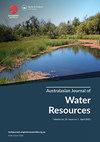舱底水处理油水分离技术
IF 2.2
Q2 WATER RESOURCES
引用次数: 7
摘要
船舶累积舱底水的排放对船舶的稳定和安全至关重要。但是,含有污染物的舱底水,包括废油和含油废物,必须在排放到海洋之前进行处理。《国际防止船舶造成污染公约》(MARPOL)规定了严格的油排放限制,以尽量减少海洋污染。因此,必须安装高效的油水分离器,将油与舱底水分离。本章介绍并讨论了目前用于舱底水处理的油水分离技术的工作机理和优缺点,包括重力法、离心法、浮选法、混凝絮凝法、生物法和吸附法。本文章由计算机程序翻译,如有差异,请以英文原文为准。
Oil–Water Separation Techniques for Bilge Water Treatment
Discharging accumulated bilge water from the ship is very important in order to maintain its stability and safety. However, the bilge water that contains contaminants, including waste oils and oily wastes, must be treated prior discharging to the sea. The International Convention for the Prevention of Pollution from Ships (MARPOL) has set strict oil discharge limit in order to minimize sea pollution. Thus, an efficient oil–water separator must be installed to separate the oil from the bilge water. This chapter introduces and discusses the working mechanisms, as well as advantages and disadvantages of the available oil–water separation techniques for bilge water treatment, which include gravitational, centrifugation, flotation, coagulation and flocculation, biological processes as well as absorption and adsorption.
求助全文
通过发布文献求助,成功后即可免费获取论文全文。
去求助
来源期刊

Australasian Journal of Water Resources
WATER RESOURCES-
CiteScore
5.10
自引率
21.90%
发文量
25
期刊介绍:
The Australasian Journal of Water Resources ( AJWR) is a multi-disciplinary regional journal dedicated to scholarship, professional practice and discussion on water resources planning, management and policy. Its primary geographic focus is on Australia, New Zealand and the Pacific Islands. Papers from outside this region will also be welcomed if they contribute to an understanding of water resources issues in the region. Such contributions could be due to innovations applicable to the Australasian water community, or where clear linkages between studies in other parts of the world are linked to important issues or water planning, management, development and policy challenges in Australasia. These could include papers on global issues where Australasian impacts are clearly identified.
 求助内容:
求助内容: 应助结果提醒方式:
应助结果提醒方式:


